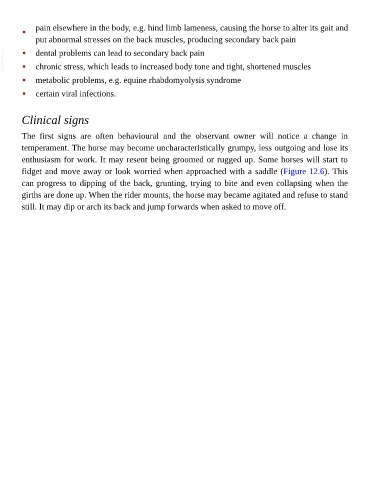Page 534 - The Veterinary Care of the Horse
P. 534
pain elsewhere in the body, e.g. hind limb lameness, causing the horse to alter its gait and
•
put abnormal stresses on the back muscles, producing secondary back pain
VetBooks.ir • dental problems can lead to secondary back pain
•
chronic stress, which leads to increased body tone and tight, shortened muscles
• metabolic problems, e.g. equine rhabdomyolysis syndrome
• certain viral infections.
Clinical signs
The first signs are often behavioural and the observant owner will notice a change in
temperament. The horse may become uncharacteristically grumpy, less outgoing and lose its
enthusiasm for work. It may resent being groomed or rugged up. Some horses will start to
fidget and move away or look worried when approached with a saddle (Figure 12.6). This
can progress to dipping of the back, grunting, trying to bite and even collapsing when the
girths are done up. When the rider mounts, the horse may became agitated and refuse to stand
still. It may dip or arch its back and jump forwards when asked to move off.

